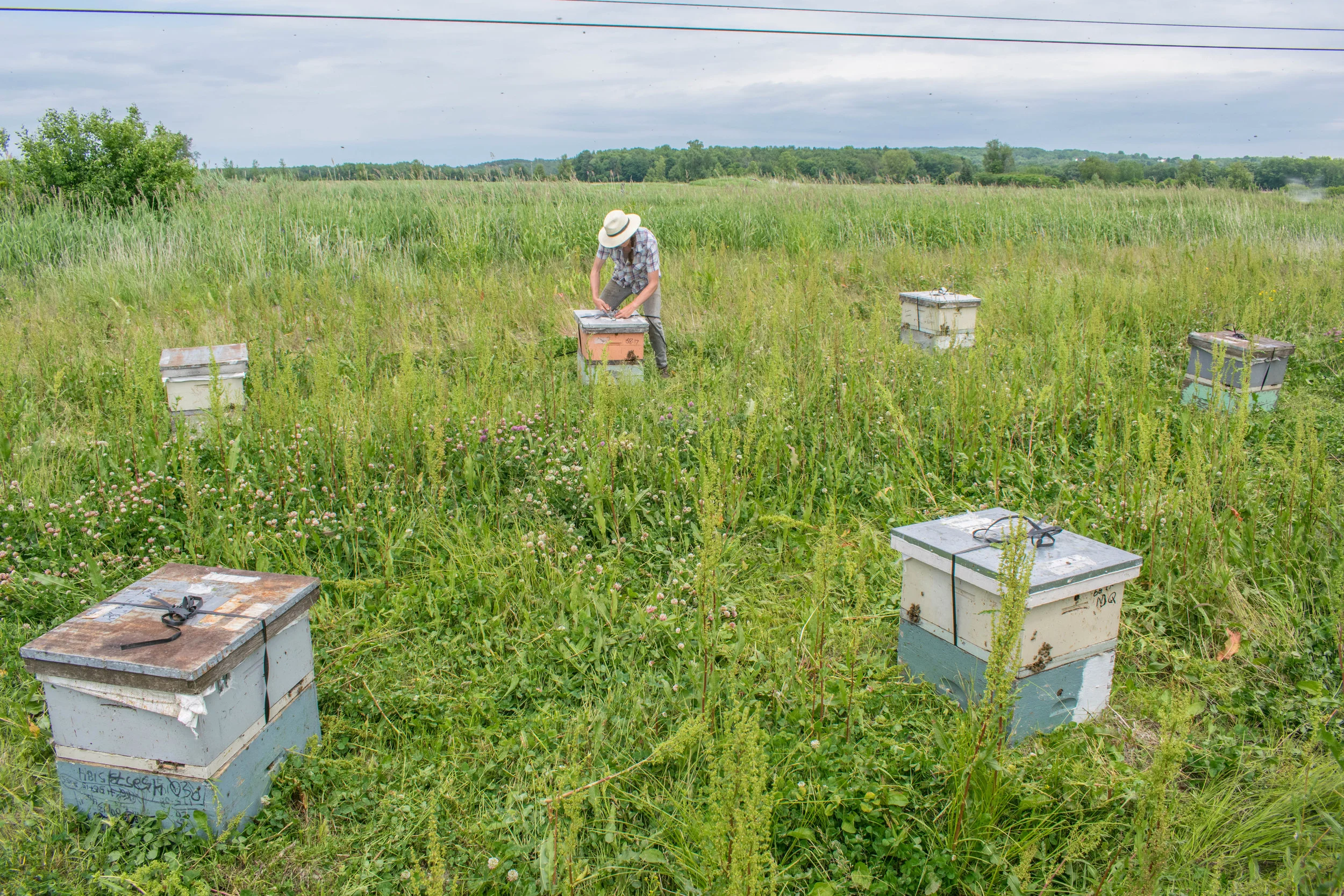
















Having just delivered mating nucs to the Cimeron Mating Yard, the crew stops to rest and chat. Each 4-way mating nuc sits on an empty deep, which functions as a stand.
Click (+) in upper right corner of images to enlarge.
All Photos: Adam Foster Collins

A view of Mike Palmer’s mating yard, near Saint Albans, Vermont. If you look closely, you can see the many hives all over the field in the grass.

The mating nucs are four to a box, and are set out in circles with 8 to 10 boxes in each circle. These hives have just been placed, and Kate is removing the straps which have been used to secure them during transit.

Mike takes a look at a mating nuc frame of brood at the upturned outer cover which he uses for a table for marking and caging queen bees.

Dan and Kork work together in our typical fashion. A person sits on each side of a box, and shares the task of taking out frames and searching for the queen. When she is found, the frame is carried to Mike, who plucks her from the frame for marking and caging. This is repeated until all four colonies have been checked in each box. Then the pair moves to another box.
New ripe queen cells are placed in the hives the next day; with virgin queens emerging soon after. Sixteen days later, the crew returns to catch and cage the new queens.

Mike, Kate and Bianca mark and cage queens as they are found. The real time consuming part is the addition of nine attendants per cage. Mike likes nine, as he feels that the larger number is better to insure that the queen is cared for in transit to his customers . These nine worker bees must be added to each cage one at a time.

Queen catches are usually over by mid-afternoon. Then we all gather to share some food, drinks and conversation, before heading our separate ways.

At the end of the season, as the last queens are being caught and removed, the queens of every 6th colony are left. Then the mating nucs are rearranged so that 5 queenless nucs can be combined with the nuc of each remaining queen. These combined colonies are stacked so that there are two colonies, side by side in each stack, and each colony is made up of 24 mating nuc frames arranged 8 over 8 over 8.
Here, the colonies have just been combined using newspaper (still visible) to slow their meeting and reduce fighting.

Another shot of combined mating nucleus colonies. The bottom box is an empty one which is used as a hive stand.